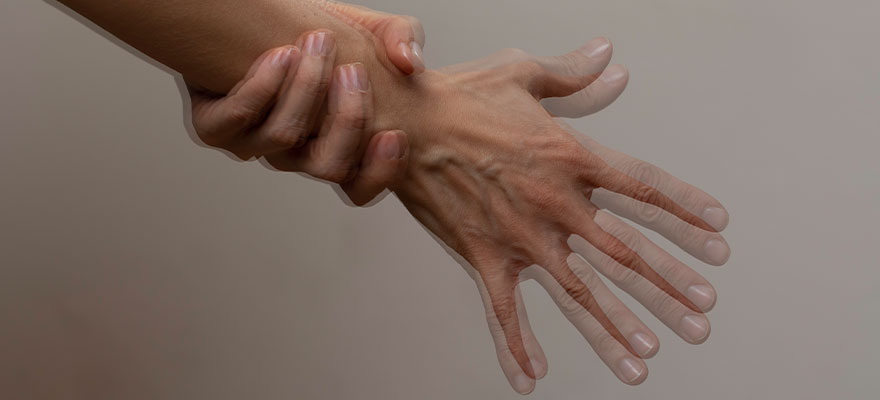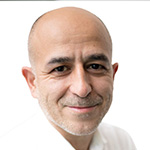TPS in Parkinson’s disease: survey shows encouraging results from clinics and practices
Scientific studies underpin experience in daily practice
Transcranial Pulse Stimulation (TPS) is becoming increasingly important in the treatment of Alzheimer’s dementia. As an outpatient therapy option that is well tolerated and safe for patients – as has also been proven in studies – and is used as a supplement to drug treatment, more than 10,000 patients at all stages of the disease have already benefited from TPS. Scientists and colleagues worldwide report that the gentle shock wave therapy TPS can slow down or even stop the progression of the disease in many cases. It can often also reduce symptoms and thus offer patients and their families a significantly improved quality of life.
These findings are now widespread and are being confirmed by more and more studies and investigations. But can Transcranial Pulse Stimulation (TPS) also help people with Parkinson’s disease? This question has been the subject of scientific research for many years. After all, Parkinson’s patients have been treated with TPS in clinical settings for more than 12 years and its long-term progress to date has been well documented. In addition, the first clinical studies have now also confirmed the potential effectiveness of TPS in Parkinson’s disease.
Morbus Parkinson’s – medication is often associated with various side effects
Parkinson’s disease, the most common neurodegenerative disease after Alzheimer’s, is characterized by the loss of nerve cells in the ‘substantia nigra’, a structure of the brainstem, resulting in a lack of dopamine. The exact causes of this cell death have not been fully explored to date.
There is also no cure yet for Parkinson’s disease. Drug therapy approaches are intended to control the disease, although most drugs can become less effective over time. In addition, depending on the type of medication, many patients experience various side effects, such as nausea, dizziness, confusion and hallucinations. They can also cause cognitive side effects such as memory problems, confusion and hallucinations, especially in older patients.
Finally, when medications are no longer sufficient, a device called a brain pacemaker may be used. Electrodes placed in the brain through surgery stimulate or suppress specific areas of the brain, which is thought to relieve symptoms.
Transcranial Pulse Stimulation for Parkinson’s Disease: Already Available in Hospitals and Medical Practices
Of course, surgery or hospitalization is no longer necessary for Parkinson’s patients treated with Transcranial Pulse Stimulation. And today, TPS is already benefiting numerous patients.
Although it is currently still a so-called “off-label” therapy for Parkinson’s, which means that an approved therapy is already being used outside of the previously approved applications. This applies when scientific findings and clinical experience indicate a benefit for the patient in a further indication. “Off-label” is commonly used in medicine, including medications, when there is no other effective treatment or a standard therapy has failed.
Transcranial Pulse Stimulation in Parkinson’s Disease: the focus of clinical research for many years
Transcranial Pulse Stimulation (TPS) has been the subject of scientific investigation for many years with respect to its therapeutic potential for patient:s with Parkinson’s disease and today has a very strong body of data. In many clinics, medical institutions and practices, it has therefore long been used for the treatment of Parkinson’s disease.
In clinical research, in addition to ongoing studies, the extensive work of Dr. med. Lohse-Busch should be mentioned. The co-developer of Transcranial Pulse Stimulation can look back on many years of long-term experience with Parkinson’s patients.
After observing the patients, the total UPDRS (Unified Parkinson’s Disease Rating Scale) score improved on average by 44 percent and the motor score by 52 percent, both three months after the initial TPS therapy. The results remained stable with slight fluctuations over years, with no side effects!
Current survey among TPS experts: TPS therapy additive treatment option for Parkinson’s disease
A survey of medical professionals now conducted by Henning Lohse-Busch, MD, clearly underscores the therapeutic benefits of outpatient TPS therapy for Parkinson’s disease in everyday practice.
In the current survey, in which 11 clinics and TPS centers participated, a total of 39 patients were recorded. Remarkably, especially patients with moderate to severe stages of the disease were able to derive considerable benefits from Transcranial Pulse Stimulation.
In the overall evaluation, TPS showed efficacy in 80 percent of Parkinson’s patients, according to test results.
Very strong and strong improvements even in moderate and severe Parkinson’s
Survey results show significant improvements in symptomatology and general condition for most of the patients treated. Very strong improvements were noted in six affected individuals, while 18 patient:s showed strong improvements, including 11 with moderate PD and five with severe PD. Good improvements were documented in seven patients.
No changes were seen in six of the 39 cases mentioned. Also, in two patients, the disease progression continued despite treatment. This finding underscores the individual variability in treatment response and the continued need for further research in this area.
As would be expected, no significant side effects were noted during or after treatment with TPS. In summary, 31 of the 39 PD patients, or about 80 percent, benefited from TPS to varying degrees. This encouraging finding is consistent with the results of many TPS investigations, studies, and treatment outcomes in Alzheimer’s dementia in clinical practice.
TPS in Parkinson’s disease: neurostimulation as an effective treatment option
“This nonrepresentative survey of TPS in use for Parkinson’s symptomatology shows markedly positive results that urgently need to be followed up,” Dr. Lohse-Busch said, assessing the anonymized analysis of his survey.
Experts and the major neurological societies have long agreed that neurostimulation methods such as Transcranial Pulse Stimulation (TPS) offer a whole range of new possibilities for the treatment of neurodegenerative diseases and will become an integral part of therapy in the future. However, it is still a question of time until this knowledge will also become anchored in the consciousness of the general public.


